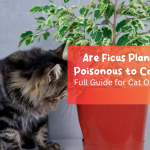Tradescantia Nanouk, or Fantasy Venice or Inch Plant, is a popular houseplant cherished for its stunning variegated foliage and vibrant colors. However, like any plant, Tradescantia Nanouk is susceptible to specific issues, including the development of brown spots on its leaves. In this article, we will explore the causes of brown spots on Tradescantia Nanouk and provide practical tips to treat and prevent them.
Understanding the Causes of Brown Spots on Tradescantia Nanouk:
- Overwatering: One of the leading causes of brown spots on Tradescantia Nanouk is overwatering. This plant prefers well-draining soil; excessive moisture can lead to root rot and subsequent leaf damage.
- Underwatering: Conversely, underwatering can also result in brown spots. Insufficient water supply causes the plant to become stressed, leading to wilting and the appearance of brown patches.
- Inadequate Lighting: Insufficient or excessive lighting can cause brown spots on Tradescantia Nanouk leaves. Too much direct sunlight can scorch the leaves, while low light levels can weaken foliage.
- Nutrient Deficiency: A lack of essential nutrients, such as nitrogen, magnesium, or iron, can manifest as brown spots on the leaves. This deficiency weakens the plant’s overall health and appearance.

Treating Brown Spots on Tradescantia Nanouk:
- Adjusting Watering Habits: Ensure you properly water your Tradescantia Nanouk. Allow the top inch of soil to dry out before watering again. Ensure the pot has drainage holes to prevent water from accumulating at the roots.
- Adequate Lighting: Place your plant where it receives bright, indirect light. Shield it from the intense midday sun, which can scorch the leaves. Adjust the positioning of the plant if needed to provide optimal lighting conditions.
- Nutrient Management: Provide your Tradescantia Nanouk with a balanced, water-soluble fertilizer formulated for houseplants. Follow the instructions on the packaging for dosage and frequency; This will help address any nutrient deficiencies and improve the plant’s overall health.
Preventing Brown Spots on Tradescantia Nanouk:
- Maintain Proper Humidity: Tradescantia Nanouk thrives in higher humidity levels. Mist the leaves regularly or place a tray filled with water near the plant to increase humidity levels.
- Avoid Overcrowding: Overcrowding can lead to poor air circulation and increased humidity around the leaves, creating an ideal environment for fungal diseases and brown spot development. Consider repotting or spacing out your plants as needed.
- Regular Inspections: Regularly inspect your Tradescantia Nanouk for signs of pests or diseases. Swiftly address any issues to prevent the spread of infection and the development of brown spots.
- Pruning: If you notice brown spots on specific leaves, remove them using clean, sharp pruning shears, This will prevent any potential disease and improve the plant’s overall appearance.

Conclusion:
You can maintain a healthy and vibrant plant by understanding the causes of brown spots on Tradescantia Nanouk and following the recommended treatments and preventive measures outlined in this article. Remember to strike the right balance with watering, lighting, and nutrition to ensure the optimal growth and beauty of your Tradescantia Nanouk. With proper care, your plant will continue to thrive, delighting you with its stunning foliage for years. Read article about Are Mango Trees Evergreen? and Mango Brown Inside in avi Hoffman garden.
FAQ
There are a few possible reasons why your pink Nanouk plant is turning brown. One common cause is overwatering. Pink Nanouk, like other Tradescantia varieties, prefers well-draining soil. If the soil remains constantly wet or the plant sits in soggy conditions, it can lead to root rot and subsequent browning of the leaves. Another possibility is inadequate lighting. Insufficient light levels or too much direct sunlight can cause stress to the plant, resulting in browning leaves. Evaluate the watering routine and lighting conditions to address these potential issues.
If your Tradescantia plant is browning, a few factors must be considered:
1. Overwatering is a common culprit. Tradescantia plants prefer slightly moist soil but can suffer if consistently kept in overly wet conditions.
2. Inadequate lighting can lead to browning. Tradescantia requires bright, indirect light to thrive. Insufficient light levels can weaken the plant and cause leaf discoloration.
3. Nutrient deficiencies or fluctuations in temperature and humidity can also contribute to browning.
Assess these factors and adjust the watering routine, lighting, and overall care to help prevent further browning.
Root rot is a common problem in Tradescantia Nanouk plants, and it can be identified through various signs. One of the key indicators is the wilting and yellowing of leaves, which may progress to browning or blackening. Additionally, suppose you notice a foul odor coming from the soil, mushy or dark-colored roots, or the plant easily detaches from the soil due to a weakened root system. In that case, these are strong indications of root rot. If you suspect root rot, carefully remove the plant from its pot and examine the roots. Healthy roots should be firm, white, or light-colored. If you find rotting or decaying roots, it is essential to address the issue promptly by trimming off the affected roots and repotting the plant in fresh, well-draining soil. Adjust the watering routine to prevent future occurrences of root rot.







